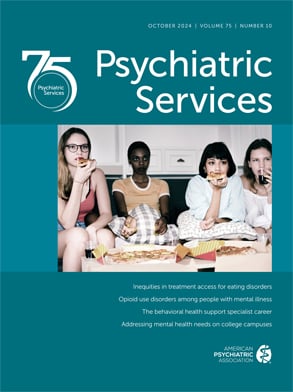States seeking to modernize their behavioral health care systems and meet growing demand can find a variety of shared learning spaces and tool kits. O’Connell et al. (
1) describe Washington State’s novel curriculum and career pathway for behavioral health support specialists (BHSSs).
Traditionally, states have used a range of policy levers across agencies and domains to address workforce challenges. One set of levers has centered on licensure, for example, removing scope-of-practice barriers or interstate compacts. As employers, some states (e.g., Colorado) have engaged in strategies to increase retention and reduce burnout among their state hospital, clinic, and health department employees. As Medicaid payers, states have increased payment for services to encourage new entry of providers or have defined new bundled services to align with desired delivery models such as team-based care.
State labor and higher education departments offer a range of additional policy tools, including loan forgiveness and scholarship programs, marketing of specific behavioral health careers, academic supports and mentoring, expanded access to credentialing opportunities, and pipeline approaches such as paid prelicensure internships or even specialized Americorps progams. Traditional loan forgiveness and scholarship programs have been enhanced with child care and transportation support, sometimes conditional on working for the state for a minimum specified period. In some cases, education and training initiatives have been focused on individuals from historically excluded groups, such as people with disabilities or from underserved geographic or minoritized communities. State agencies have worked closely with employers and community groups to increase training opportunities and to remove friction—for example, by standardizing position descriptions and qualifications across employers and payers.
The BHSS position developed in Washington is an example of a multiagency accomplishment, in close partnership with an academic medical center, the licensure entity, state professional societies, and the Medicaid agency. With this foundation the BHSS position builds on the lessons and cross-agency collaborations that helped promote the peer recovery specialist workforce in several states but with a more intensive training program and broader skill set. In some respects the BHSS is similar to the behavioral health aid (BHA) program in Alaska (
https://akchap.org/wp-content/uploads/2022/02/BHA-Specialized-Training-Matrix-2022-02-28.pdf), and although the latter has strong community roots, it is limited to tribal communities, and BHAs must be employed by a tribal entity. If the BHSS position can incorporate the strong cultural and community context that is embedded in the BHA program, it also holds promise for greater health equity.
Evaluation of the policy to create a BHSS workforce in Washington State will be key to BHSS success and dissemination. Equitable access and quality of care are important goals. Understanding where BHSSs can have the greatest impact across the mental health continuum is another. A robust evaluation would also address whether and to what extent identifying new cases puts greater pressure on access to the service system.
One downside of tying the behavioral health workforce to Medicaid considerations is that states may miss the opportunity to expand the workforce that is engaged in prevention. Focusing on clinical services and insurance-based payment leaves out programs such as universal, school-based interventions that seek to prevent or reduce depression and anxiety symptoms upstream. Too often prevention is framed in the context of screening and clinical referral, not as broader, primary prevention efforts that teach problem solving or emotion regulation. Support of educators in their role as mental health promoters, not of merely convenient locations for school-based health centers, should be part of the workforce conversation.
Finally, many of these state workforce efforts received a significant boost from pandemic-era federal funding. This funding was combined with support from other major initiatives, including the National Suicide Hotline Designation Act of 2020, with its focus on crisis services, and the Bipartisan Safer Communities Act in 2022, with its focus on criminal/legal settings. Thus, given both the greater availability of funding and the increased need, it is hardly surprising that 30 states enacted laws to increase the behavioral health workforce in 2022 alone. In the face of persistent behavioral health demand, states will need federal support to innovate and address this important constraint on improving the nation’s mental health.

